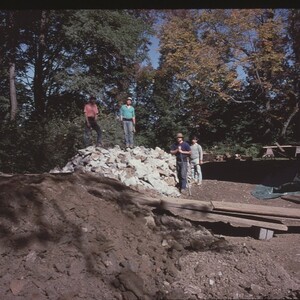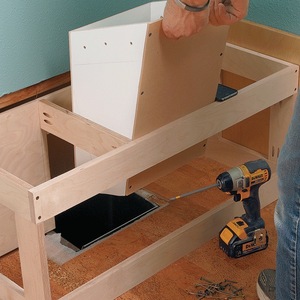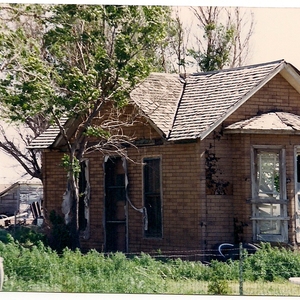I have 3 bump outs on first floor of my New England Colonial house. The basement is a full unfinished basement. Although unheated, the basement stays above about 45F with the oil burner and heating pipes located in the basement. I run a dehumidifier continuously to maintain equal or less than 45% RH. The basement has had a recent air seal and insulation upgrade by a “Mass Save” contractor, but that did not do much to help my cold first floors and kitchen cabinets in the winter. Attached is the existing as built and a proposed upgrade detail for improved insulation on bump outs. I have read alot about different bump out insulation and sealing options (closed cell spray foam, stuff full of insulation, and bottom insulation only so air from basement can warm bump out).
I like the concept of allowing the basement air to communicate with the bump out especially in the bays with pipes that could freeze.
Although not shown on my sketches, air sealing is already pretty good and would be maintained with any upgrade. The vapor barrier is my main question. I was thinking that my proposed design would work because the pink formular 150 foam board would act as a vapor barrier and the unfaced insulation inside the bays would allow any water vapor to dry to the basement atmosphere.
Another question is air sealing the heating system copper pipes for baseboard heat. They have some pipe insulation around them as they penetrate oversized hole into the first floor. What is best detail for sealing baseboard heating pipes considering air sealing while allowing pipe movement due to thermal expansion?
What did I miss?
Any suggestions or comments to improve proposed detail would be appreciated.
Dan Y


















Replies
You want the vapor barrier on the heated side of any assembly.
As air transits the wall, it moves from warmer to cooler, and eventually is at a temperature below the dew point, and you get liquid water wherever that is.
Hi Mike, thanks for reply.
If possible, I want to use rigid foam on the exterior underside of bump out (sandwiched between 1/2" plywood sheets). I understand the rigid foam is considered a vapor barrier/retarder. I was reading that you don't want a vapor barrier on both sides (warm and cold) of the assembly. If so, with foam on the outside, I thought I needed a permeable insulation on the inside (between joists)?? For this detail to meet code, I understand that the foam must be a certain thickness (min R value) so that the plywood under joists would not be cold enough to condense any moisture in the assembly. I want the exterior foam, if possible, due to my goal to maximize overall R value between outside surfaces and my pipes and my hardwood floor. Using 2 inches XPS outside (R10) plus fiberglass inside (between R13 and R19, depending on what I can fit below my pipes), I approach R30 while still providing air communication between the basement and joist bays of bump out.
You would be better off sealing this cavity from the basement, and allowing moisture migration into and out of this cavity from inside the bump-out. (above the floor).
with air sealing and your improved insulation, heating the interior of the house should do a better job of keeping the bottom of the floor warm then venting to the basement does.
Having the bump-out connected to the basement will likely result in convection which will increase heat loss as warmer air from the basement circulates into the cavity, where it cools and then returns to the basement.
Your sketch shows 1 inch XPS on the side walls. You are more likely to need two inches, or even three. air sealing around these will be important, to keep any leakage to a minimum.
Some other folks here have discussed methods to calculate the temperature at the interface of XPS and batt insulation based on the anticipated temperature and humidity, and considering the relative R values on each side of this sandwich.
https://www.finehomebuilding.com/forum/dew-point-in-wall-calculation-calculator
is some discussion.
This is a little counter-intuitive, but with more batt insulation, you need thicker XPS to avoid dew point problems inside the batts.
I am a big fan of insulating the actual pipes that feed your radiators (and also hot water or cold water lines), in addition to the overall insulation to improve comfort and reduce heat loss. If you want to leave them naked where they indirectly heat the basement, it is ok, but I would want to use some good foam or fiberglass insulation meant for this purpose under the bump-outs.
Thanks Mike, appreciate the feedback. Will look into improvements as you have noted.
Dan